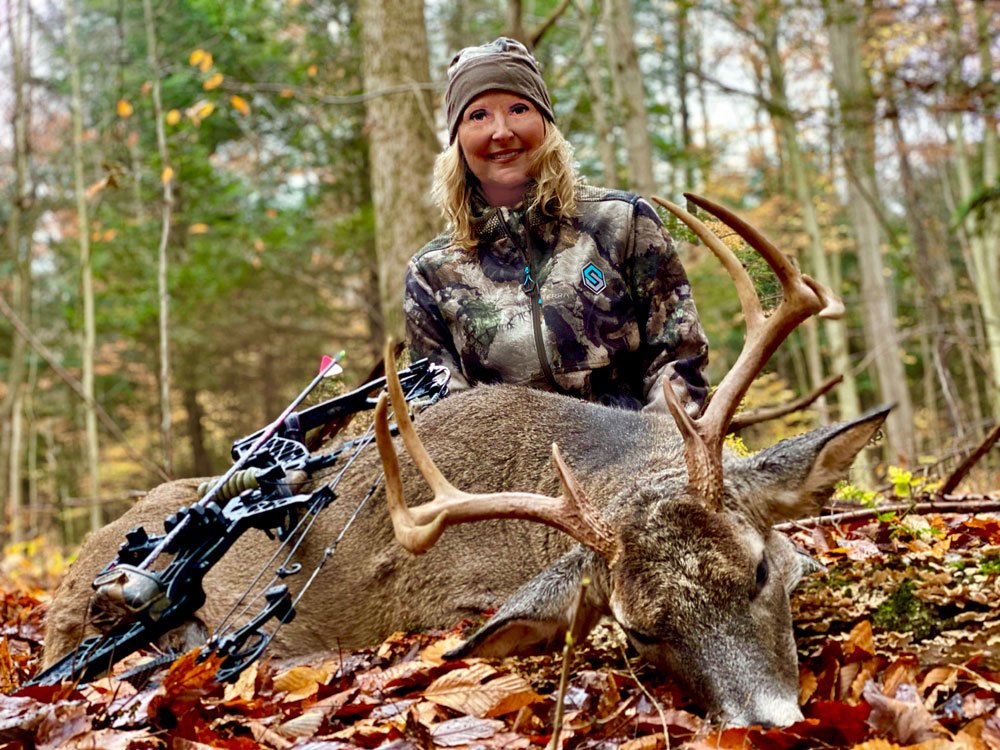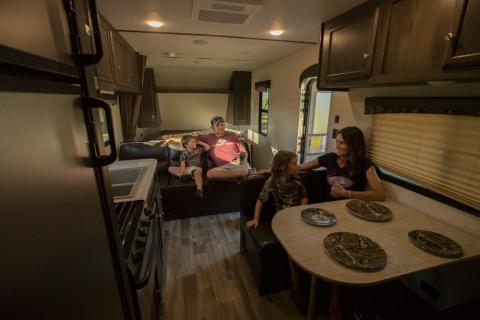provided by John Phillips
Chris Kirby, the president of Quaker Boy Calls, and his wife, Michelle, are now the owners of Quaker Boy Calls in Springville, New York. Here at Mossy Oak, we’ve seen Chris grow up working with his dad, Dick Kirby, the creator of Quaker Boy Calls. Following in Dick’s footsteps, Chris became a major national and world’s champion turkey-calling champion and also is involved in the Quaker Boy videos and television shows. He’s been calling game and taking game since he could walk. As Chris Kirby says, ‘I’ve been a Mossy Oak Pro as long as I can remember. Under our ownership, Quaker Boy will continue to produce its award-winning, quality calls in the USA.” Chris hunts all over the nation for not only deer and turkey with his bow and guns, but about every other type of game that can be called or decoyed into the hunter.

I make sure I’m well aware of cold fronts at this time of the year, because when there’s a cold front coming in, the bucks really start moving - hunting food and places to bed-down. Anytime the wind’s coming out of the north, and the barometric pressure starts to move up, deer are on their feet and moving earlier than you expect and even are on their feet during that last hour of daylight. Now the exception to this behavior is the first snowfall of the year. Here in New York, all my life, I’ve learned that when snow first hits the ground that deer hunker down - probably trying to figure out what that white stuff is. Their world looks and smells differently, and the deer can’t see as far with snow on the trees as when there’s no snow. But by the second day or the third day after the snowfall, regardless of the barometric pressure, the deer will be back on their feet and searching for something to eat. But a day or two after the snow hits, we see a lot of deer headed to food sources.
The two elements that determine when and where you can take a buck during the post-rut in this northern tier of states are the barometric pressure and the availability of food sources. So, when hunting, we attempt to stay away from the food sources and hunt the trails leading to the food sources. We realize if we hunt over the food sources, the deer will move to another food source.
Too, the difference in the size of the deer we take in early bow season and the deer we harvest in the post-rut is dramatic. My wife, Michelle, took a buck early in the 2020 archery season that weighed 185 pounds and had a nice layer of fat. On the opening day of rifle season, which occurs in the postrut, she took another buck that weighed 135 pounds. Both of these bucks were 3-1/2 years old and lived in the same community. That rifle buck she took had no fat on him. Our bucks run hard during the rut, and as soon as it ends, they go back to the best food source they can pinpoint to rebuild their bodies and put on as much fat as possible can for the cold weather just ahead of them.
During the post-rut, in the evenings I hunt closer to the food sources. In the mornings, I hunt further away from the food sources and closer to the bedding areas. The older-age-class bucks that do most of the breeding will start bedding closer to the food sources because they’re so worn down from the rut. They don’t want to travel as far from the bed to the food as they have in the early season.



























